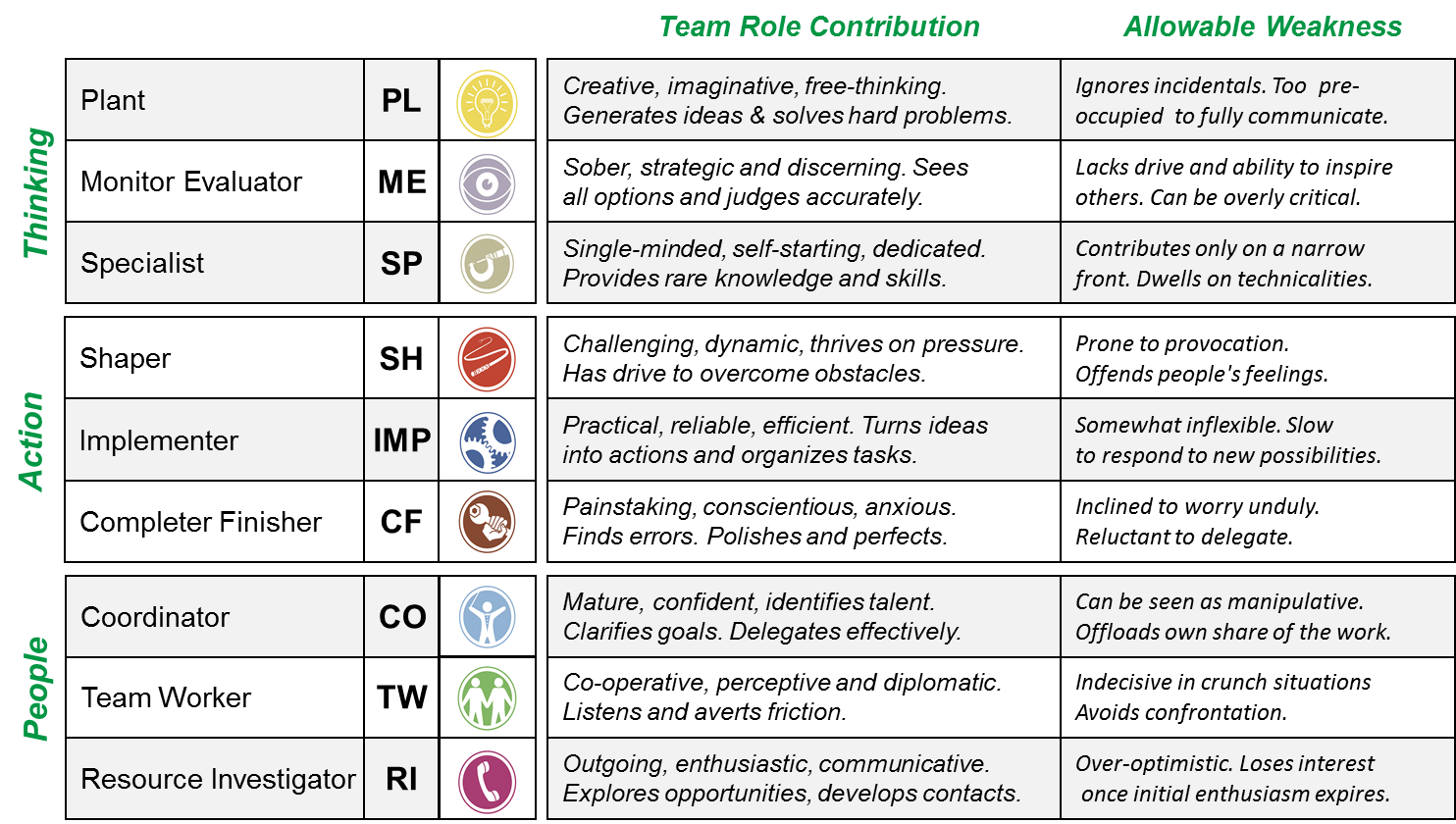ABOUT BELBIN
What is the Belbin Methodology?
Belbin is about celebrating — and making the most of — individual differences. Each of us has the potential to make a valuable and positive contribution to the team.
Belbin allows you to discover the behavioral strengths and weaknesses of the individuals that you work with.
Belbin helps you build high-performing teams, maximize working relationships, and enable people to learn about themselves.
Belbin makes it easier to engage and develop the talent that is already around you.
Why Choose the Belbin Methodology?
Ever wonder why some teams just seem to work and others hit the rocks? When things don’t work it is obvious to all and often has a profound effect on the people involved, as well as on the project or objective to be achieved. And when a team does gel and performs well, it is hard to sustain or duplicate.
Belbin provides a framework to help you form effective teams from the beginning and maintain a high standard of performance. It also provides a way to diagnose what is happening in existing teams and how to make improvements.
Using Belbin, you not only understand what your behavioral strengths are, but what you need to be doing for the benefit of the team.
Build productive working relationships.
Select and develop high-performing teams.
Raise self-awareness and personal effectiveness.
Build mutual trust and understanding.
Reduce conflict and improve decision making.
The History of Belbin
In the 1970s, industrial psychologist Dr. Meredith Belbin and his research team at Henley Management College in the UK set about observing teams, with a view to finding out where and how these differences arise. They wanted to control the dynamics of teams to discover if – and how – problems could be preempted and avoided.
Over a period of nine years, international management teams were studied. Each participant completed a battery of psychometric tests so that attributes such as personality and behavior could be brought into play and their effects on the team could be accurately considered.
As the research progressed, it revealed that the difference between success and failure for a team was not dependent on factors such as intellect, but more on behavior. The research team began to identify separate clusters of behavior, each of which formed distinct team contributions or Team Roles.
Meredith Belbin defined a Team Role as “A tendency to behave, contribute and interrelate with others in a particular way.” He found that different individuals displayed different Team Roles to varying degrees. This research resulted in the discovery of the Belbin Nine Team Roles.
THE 9 TEAM ROLES
Dr. Belbin could predict with 86 percent accuracy how a team would perform in business simulation games.
There are nine clusters of behaviors — areas of contribution — that are distinctive and predictable.
When all nine areas of contribution — called Team Roles — are well-represented in a team, there is higher potential for success.
Nine people are not required in a team to cover all the Belbin Team Roles, because individuals can contribute to a team’s success through their multiple Preferred Roles.
PREFERRED ROLES
Most individuals have three team roles that come to them naturally. These are called Preferred Roles.
MANAGEABLE ROLES
The three roles in the middle are called Manageable Roles, and can be performed on a limited basis.
LEAST PREFERRED ROLES
Most people also have three team roles that are difficult to perform, requiring much more effort. These are called Least Preferred Roles.
ALLOWABLE WEAKNESSES
Each team role brings strengths and contributions, but may also have associated behaviors that don’t contribute. Belbin calls these Allowable Weaknesses, which should be managed so not to negatively impact the team.


